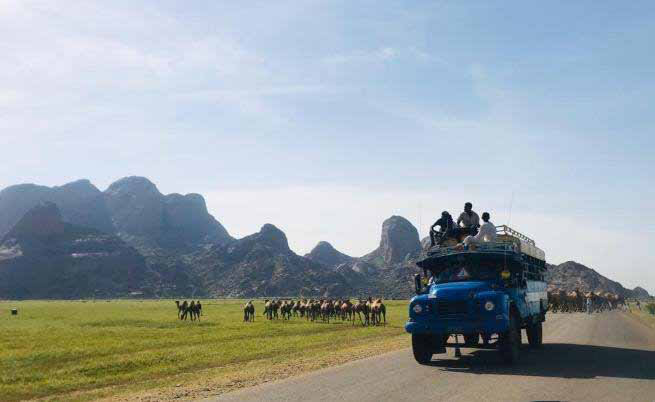
Landmines Continue to Kill and Maim despite Cessation of the War
The State of Kassala in Eastern Sudan, on the border with Eritrea, is infested with mines and unexploded ordnance (UXO), a legacy of war and conflicts between 1998 and 2005. The threat to the population is quite real and grave as the land has been turned into a source of insecurity and uncertainty. Many parts of the state are classified as dangerous areas, and it is forbidden to approach them. Even now, many years after the end of the war, the remaining mines and UXOs continue to take a heavy toll on human life.
The United Nations classifies Sudan among the countries most affected by landmines and explosives. The Sudanese government recently announced that more than 2,000 people had been injured by mines, and 588 people had lost their lives since the end of the conflict. Although Sudan has signed the 1997 Ottawa Convention, or the “Mine Ban Treaty”, that prohibits the use, stockpiling, production, and transfer of anti-personnel landmines and calls for their destruction, it is yet to ratify the treaty. The government’s mine action agency estimates that 95 million square metres of mines and remnants of war have been cleared in Sudan, and more than 10,000 mines and 3,000 anti-tank weapons have been detonated since the beginning of the implementation of the UN mine action programme in 2002.
Despite this progress, people living in rangelands, pastures and agricultural land along the Sudan-Eritrea border remain under constant threat. In addition to the loss of lives and limbs, vast areas of highly fertile arable land, the primary source of livelihood for the inhabitants of Kassala, have been destroyed by mines and become barren and dangerous. The land that these people used to cultivate and use as pasture has turned into their biggest security concern.
That is why we, as representatives of the youth from Kassala State, are renewing our call for sustained and effective action against this menace. The government of Sudan has been making a similar call to IGAD countries for a comprehensive mine action plan rather than just ‘banning’ them. Additional regional mechanisms to address this challenge of landmines must be put in place and should include compensation for the victims, speedy removal of as many mines and UXOs as possible and provision of alternative livelihoods to those who are unable to make use of their land for agriculture and pastoral activities.
Aisha - A Story of Survival and Success
In 2009, Aisha Hassan was eight years old when she went out looking for firewood for the kitchen and stepped on a landmine. She survived but lost a leg. At that time, she was at school. And, after receiving treatment for her injuries, she resumed her classes. But she had to stop going to school as her mental trauma persisted. Her psychological condition deteriorated further as she was continuously bullied by her classmates, who started calling her the “landmine girl”.
Aisha’s family managed to send her to Disabled Union, a local organisation that takes care of and mine and UXOs victims by providing socio-psychological counselling and donating artificial limbs. With the support and encouragement given by this organisation, Aisha was able to go back to school and resume her life again. This brave young woman managed to continue studying up to secondary level.
Her story received the attention of some international humanitarian actors who engaged her in an ongoing project and offered her a small remuneration that helped her to start a livelihood. Aisha managed to raise a herd of goats and cows and started her own business by selling and purchasing these animals. Now, as her business has grown, she is not only supporting her family but also making sure that a part of her earnings is used to help other landmine victims like herself.